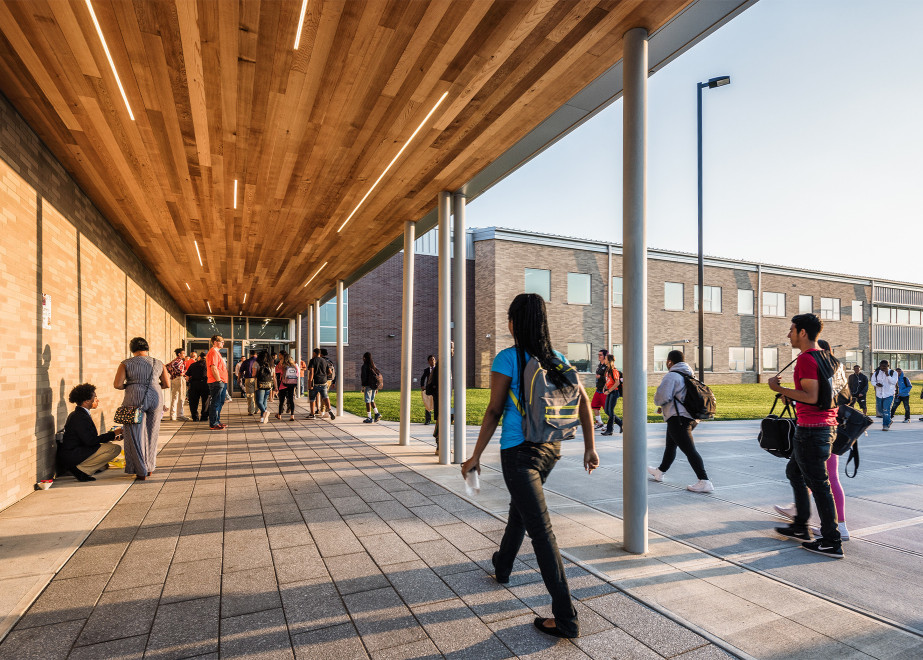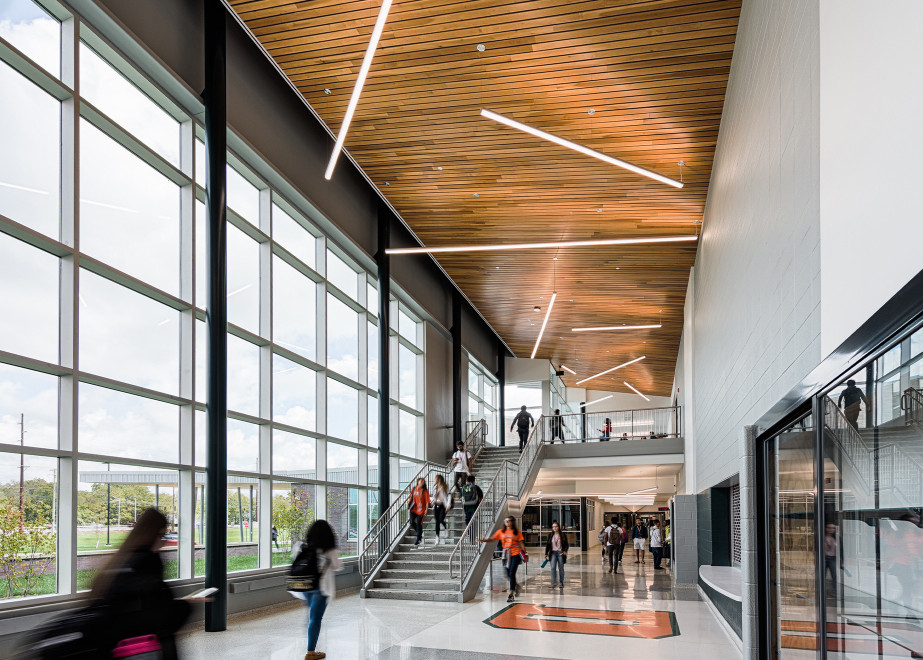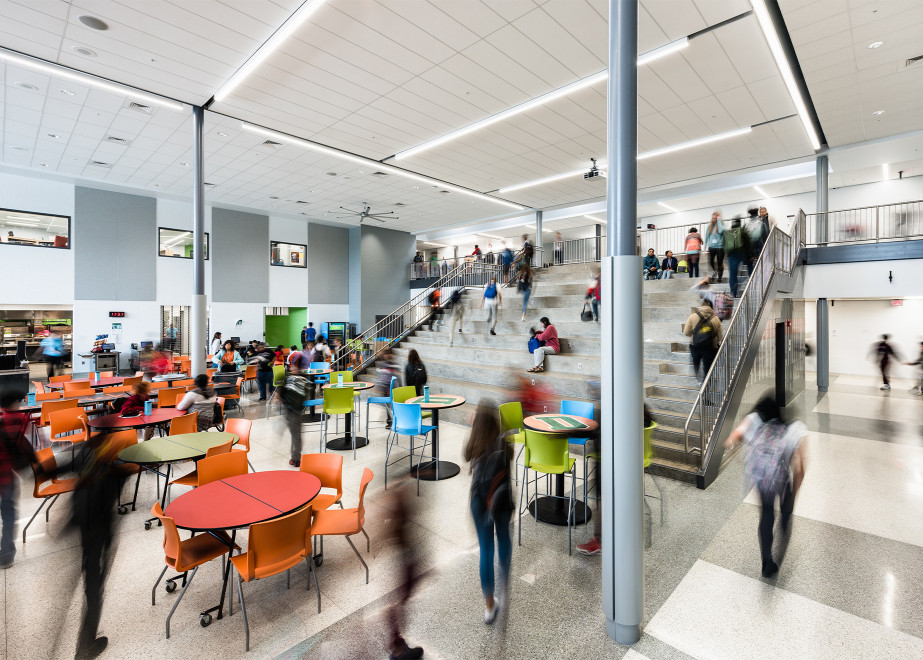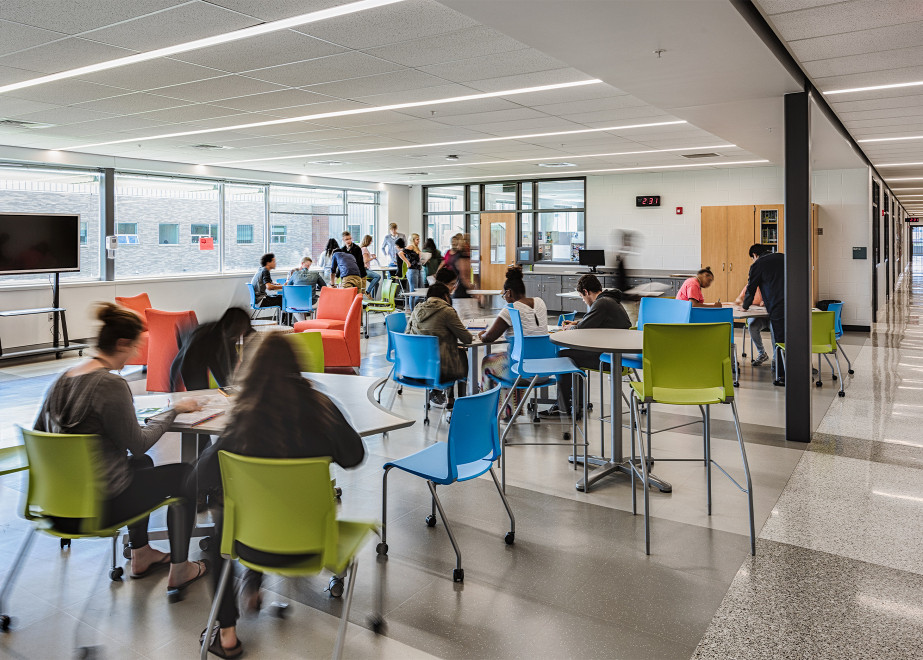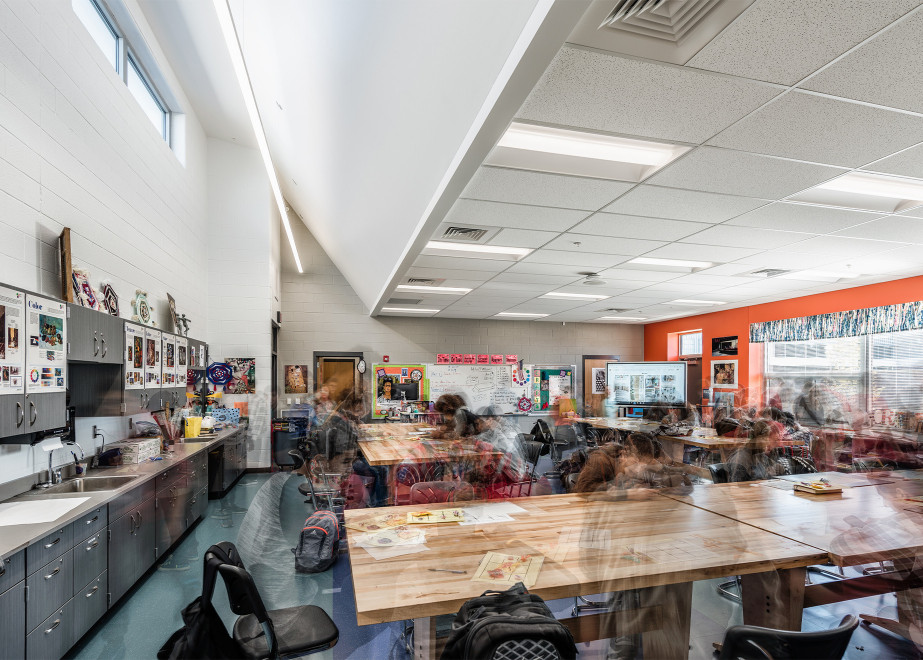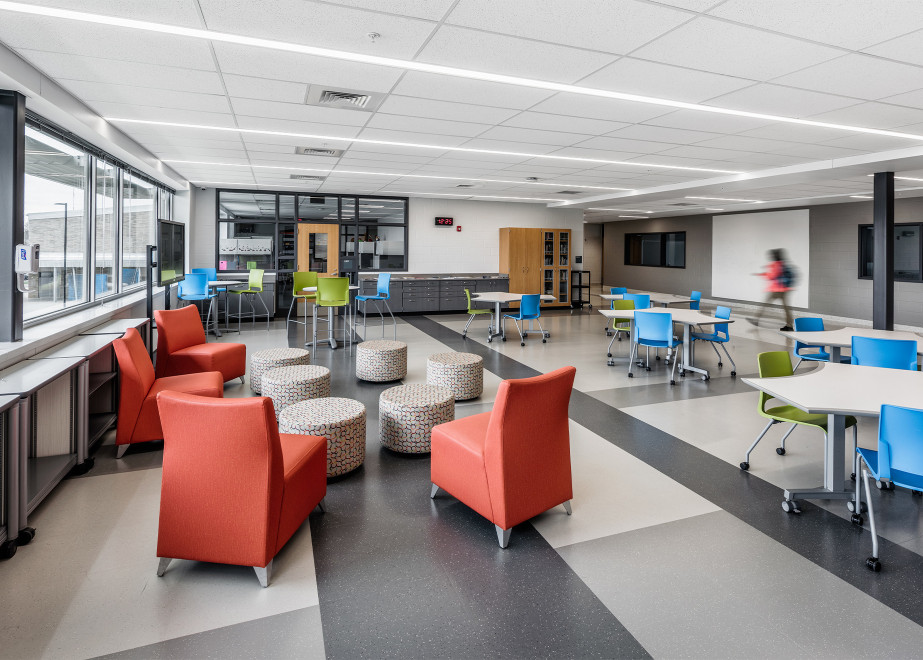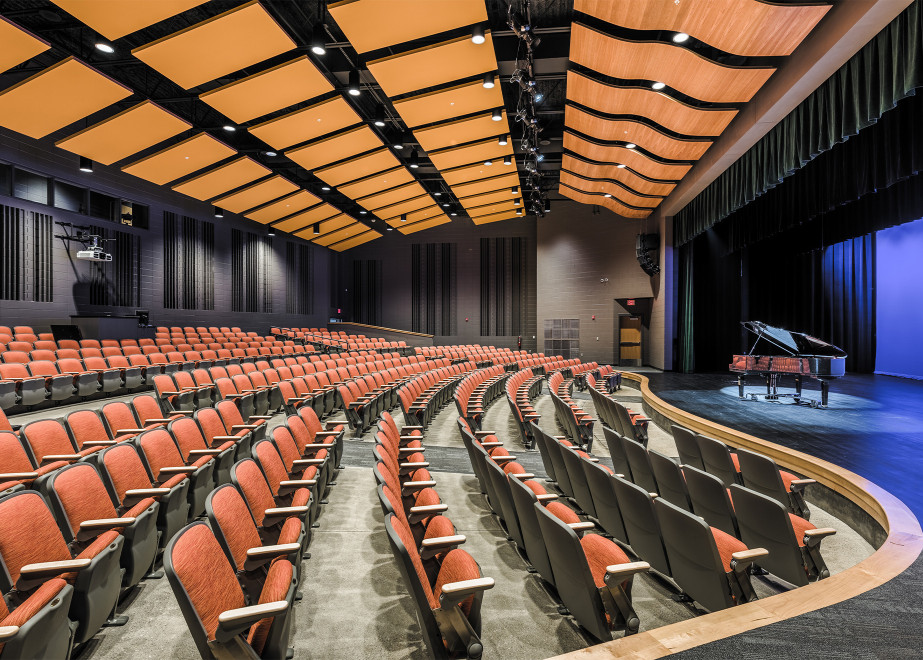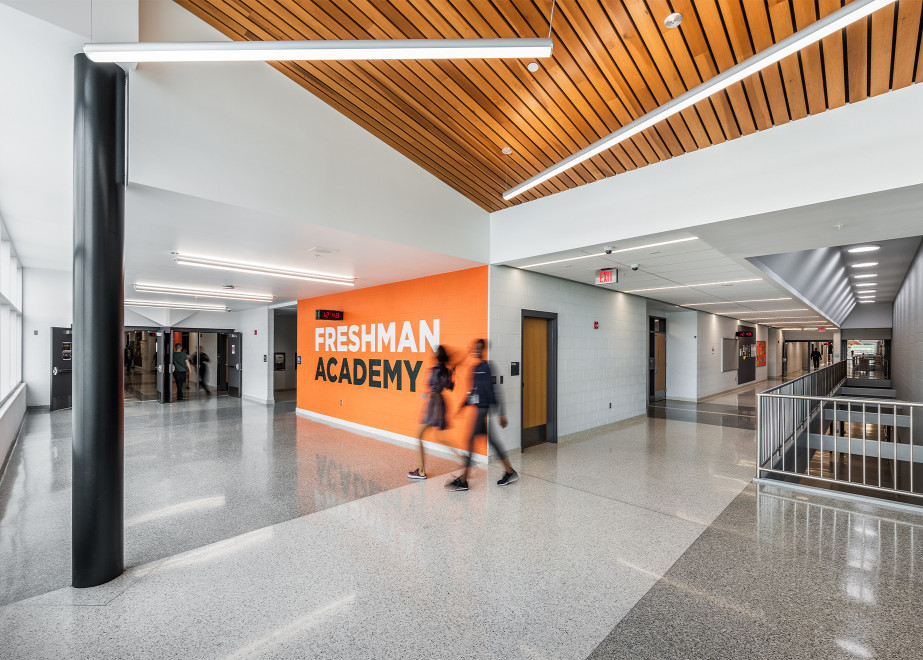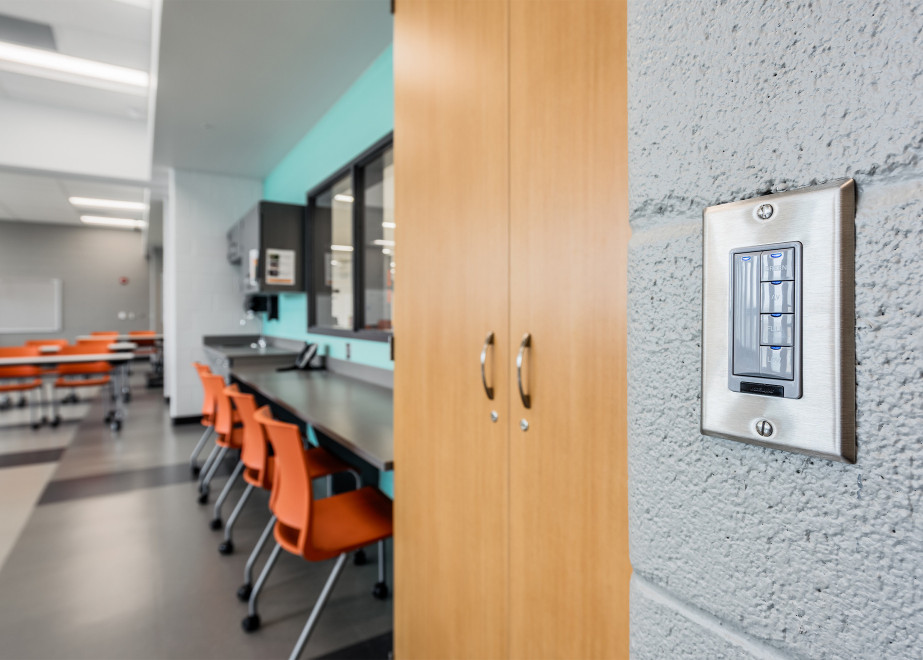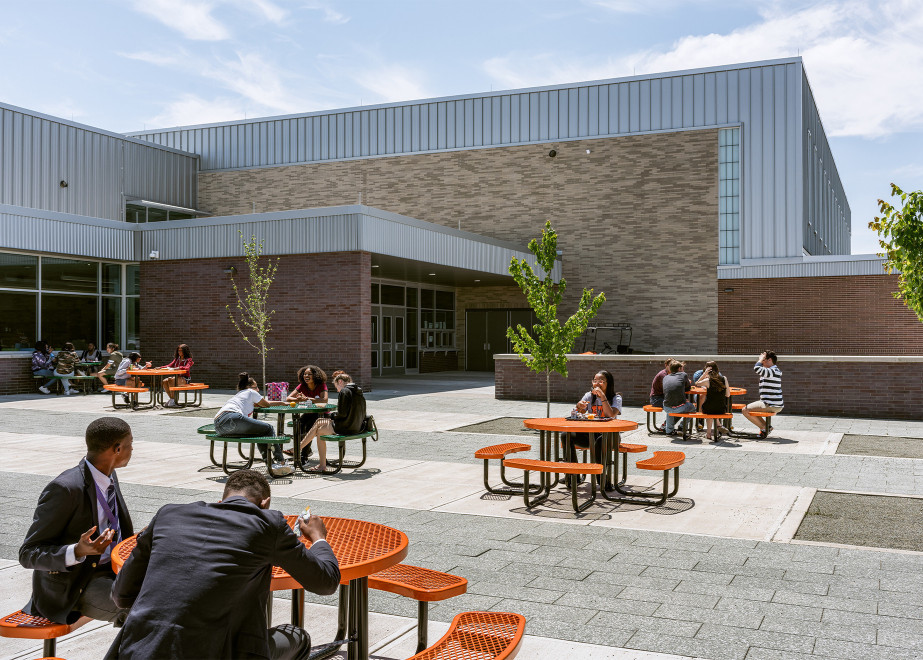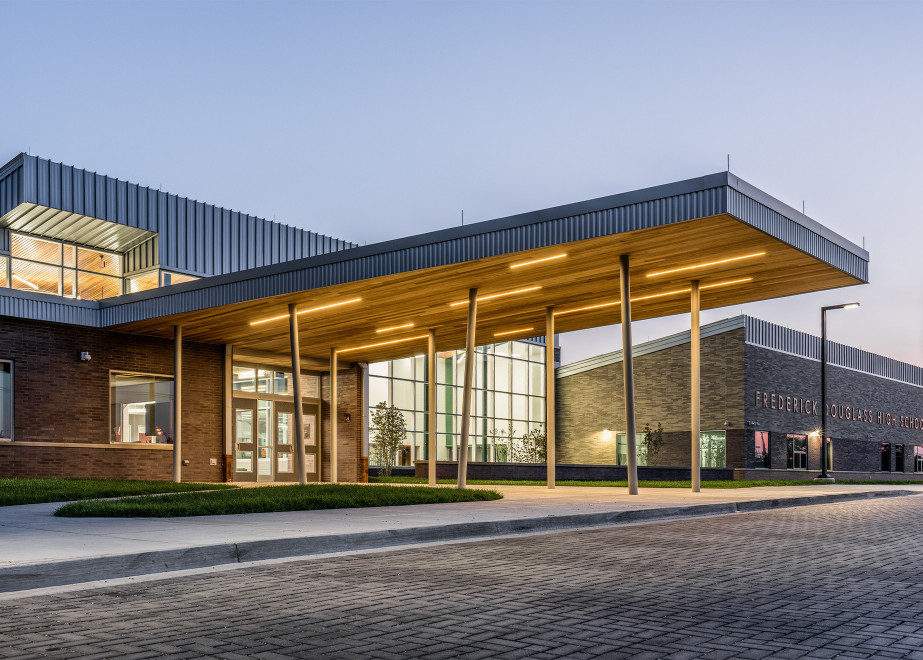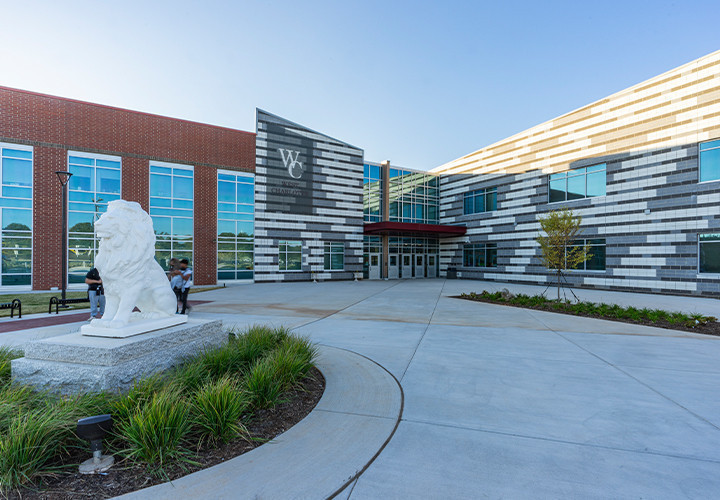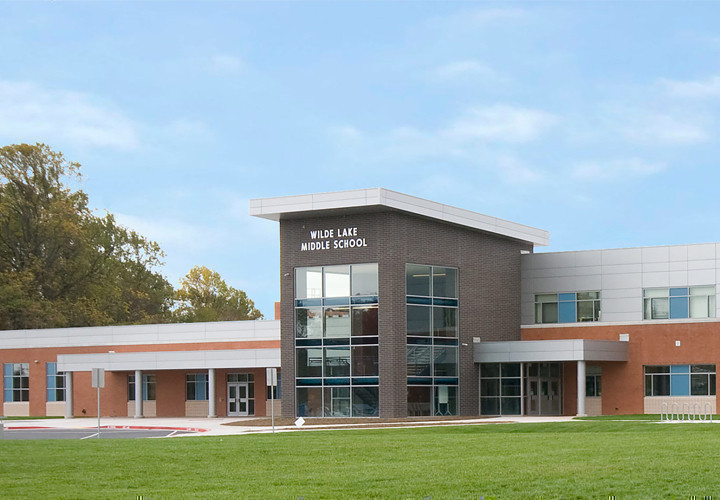The Solutions
Fayette County Public Schools' goal to build the district's first Zero Energy Ready high school was established long before the project team began the design process. In 2011, CMTA designed Fayette County's Locust Trace Zero Energy Academic Campus. To achieve Fayette County Public Schools' new desired milestone, CMTA and the school district adopted innovative approaches.
In past projects, the school district typically relied on variable refrigerant flow (VRF) systems to heat and cool their buildings, but CMTA knew this approach would hinder the new high school's ability to meet the district's sustainability goals. Fortunately, the school district trusted CMTA's First 30 design process in determining the optimal strategy for a Zero Energy school.
After reviewing design options with the owner, the team selected ground source geothermal water source heat pumps for the HVAC system. The total amount of refrigerant in the building was substantially lower than if Fayette County's traditional VRF system designs had been utilized.
When evaluating the choices of a four-pipe fan coil system with boilers and chillers versus a boiler and cooling tower system with water source heat pumps and mixing in ground-source geothermal water source heat pumps, the payback was six years and nine years, respectively. This also equated to immediate annual energy cost savings that Fayette County Schools would benefit from for the lifetime of the system.
High-volume low-velocity fans enhance air circulation in the gymnasiums and two-story cafeteria. Air velocity is increased in the summer to assist convective cooling, providing savings in compressor energy due to higher thermostatic setpoints that maintain a comfortable indoor environment. In the wintertime, the fans de-stratify the spaces, generating a more uniform temperature profile in high volume spaces and providing heating savings.
A demand-controlled ventilation system utilizes carbon dioxide sensors in all occupied spaces, directing outside air supply based on where students, staff, and others in the building are located. A single 30,000 cfm (14 158 L/s) VAV air-handling unit provides clean, filtered, neutral temperature outside air to every occupied space in the building.
A geothermal water-to-water heat pump produces domestic hot water. The hot water recirculation pump is turned off during unoccupied hours to reduce heat loss through the piping. The kitchen cooler and freezers do not have conventional air-cooled condensing units, but rather utilize the geothermal well field to reject condenser heat.
Shortly after the school was occupied, the school district enacted new security protocols, one of which involved screening all students through metal detectors as they enter the school. This required that exterior doors in multiple locations be held open for an hour each morning as students lined up for screening. The occupants complained of high temperatures and humidity every morning, so the design team investigated. After reviewing several space temperature trends, CMTA's team found that the screening process, with multiple doors open to outside air, caused the building temperature to spike right before the building went into occupied mode. An adjustment was made to enter occupied mode thirty minutes earlier, resolving the comfort issue.
Each classroom has a "green button" as part of the lighting controls to minimize energy consumption. Teachers and students can select this button to reset the classroom lighting level from 50 foot candles to 30 foot candles, reducing illumination. Tapping this button also causes the room temperature's dead band to widen by 2°F (1.1°C) up and 2°F (1.1°C) down. This meets the Kentucky Department of Education building design guides while at the same time allowing the staff and students to become part of the energy saving initiative.
All available roof area of the building can accommodate installation of photovoltaic panels, to offset at least 50% of the school’s energy use.

